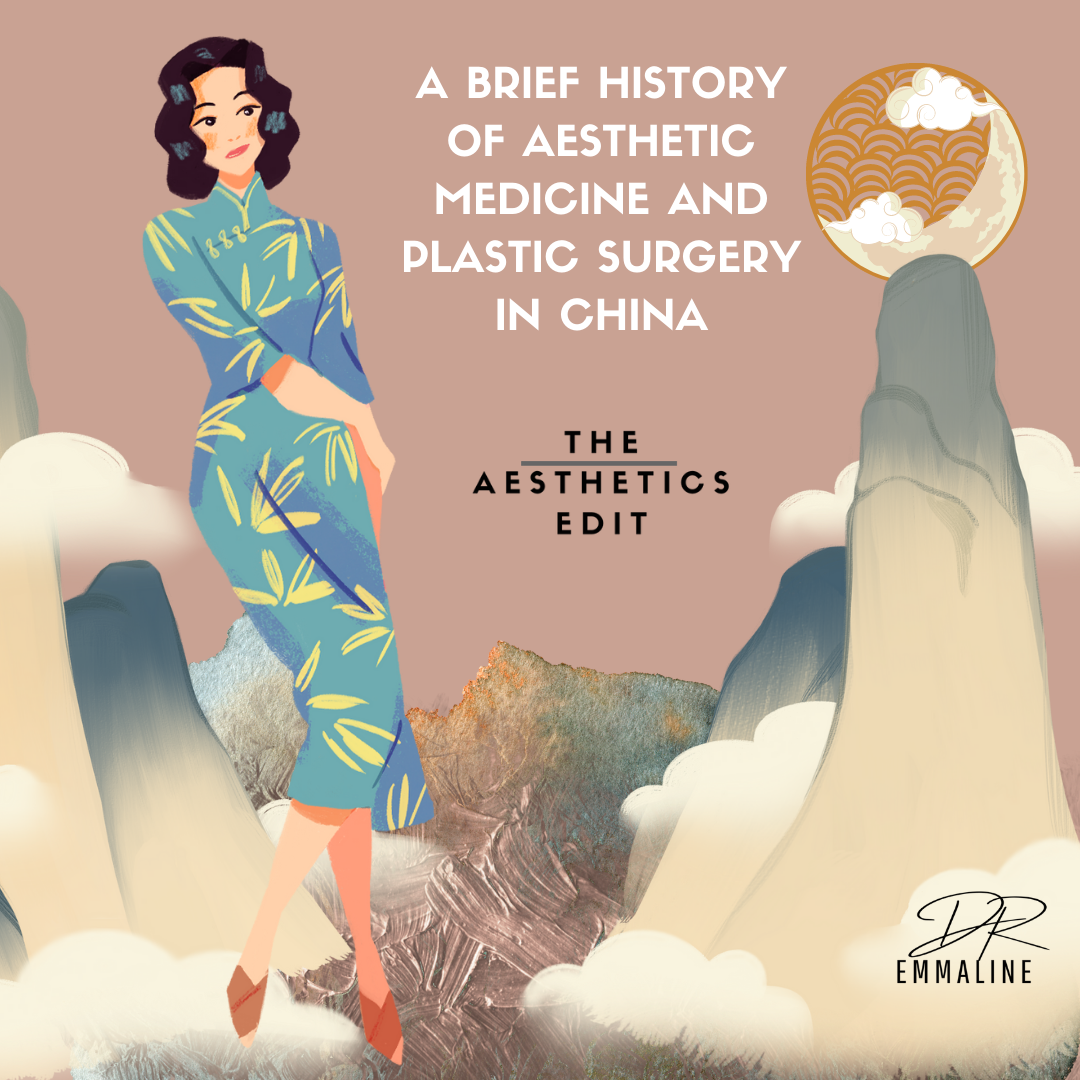
Welcome to The Aesthetics Edit™ - our educational platform at the intersection of art, beauty, medicine and science.
Explore by category and read our latest articles below,
or see a full list of all of our pieces here

The Guinea Pig Club
There are so many incredible stories in medical history, especially when it comes to plastic surgery and cosmetic medicine. As I’ve discussed previously, the origin of a lot of aesthetic medical techniques come from the horrific injuries sustained during the World Wars and the innovation and brilliance of the clinicians who tried to treat them.
One of my favourite stories is about the Guinea Pig Club.

The Spies who Underwent Plastic Surgery
t sounds like something out of a Hollywood film, but it really did happen! In the shadowy world of wartime espionage, an elite group of spies and secret group of plastic surgeons worked together to sculpt new faces and new identities during World War II.
Recently de-classified documents from Britain’s Special Operations Executive (SOE) have revealed this fascinating chapter in medical history.

Life in Plastic: The True Origin of Cosmetic Medicine
My first love was plastic surgery - and I always find it interesting to see the connotation associated with it today. People call women “plastic” as an insult, evoking the image of a Barbie doll, shaped and unnaturally molded to a male-centric ideal.
That is not what plastic surgery (or aesthetic medicine) is, was, or should be.
Plastic comes from the Greek “plastike”(teckhne) the art of modeling or sculpting, meaning return to form and function.

Cleopatra Metrodora: The First Female Cosmetic Surgeon in the Ancient World
Cleopatra Metrodora is an incredible and fascinating figure from the ancient world: an example of one of the first ever female physicians in a time where men absolutely dominated the scientific and medical landscape.
While she focused her surgical procedures on women’s health issues, mostly in the field of obstetrics and gynaecology, she also pioneered the first documented instances of cosmetic surgery in women.

A Brief History of Aesthetic Medicine and Plastic Surgery in China
Ideals of beauty and approaches to aesthetic medicine vary across time and across the world. But make no mistake, the pursuit of youth and beauty has always been a fundamental part of being human.
We explored this concept broadly in our article about the history of aesthetic medicine, but for this piece I wanted to focus on a place close to my heart: Asia. I am half-Chinese, and was lucky enough to grow up with plenty of Chinese culture through my mother and my grandparents. I was also interested to look at the history of plastic surgery and aesthetic medicine in this part of the world, particularly as plastic surgery is now booming in countries like South Korea and China.
So let’s explore a brief history of aesthetic medicine and plastic surgery in China.

Madame Noël: The First Female Plastic Surgeon
Dr Suzanne Noël was a brilliant plastic surgeon, a feminist, and a suffragette. Born in 1878, she has been called the first female cosmetic surgeon in the world, known internationally as “Madame Noël.”
In this article for the Edit, we are highlighting her amazing career and story. I’ve always felt that aesthetic medicine and plastic surgery can be extremely empowering, not just for the patients but also for the clinicians. Madame Noël is one groundbreaking example of that, and strongly advocated for women to be able to change any parts of their bodies that they so desired, to work, and to vote.

Which Cosmetic Treatments and Skincare Ingredients are Safe in Pregnancy?
Pregnancy is such an exciting and beautiful time in a woman’s life, but it can also be confusing and scary to navigate all of the sudden rule changes about what you can and cannot do. We want to look after ourselves and the baby as well as possible - and for many women a huge part of self-care can often involve medical aesthetic treatments and our beloved skincare routines.
But things do change during pregnancy and breastfeeding, and there are some cosmetic treatments that are better to avoid. Want to understand why you can have one treatment and not another? Read to find out!

Hair in Cosmetic Medicine
Aesthetic medicine as a field encompasses so many things. In New Zealand, this specialty is called “Appearance Medicine,” and when you think of appearance the first things that comes to mind are probably your skin, teeth, and hair.
Beyond its biological functions, hair plays such an important role in both our psychology and well-being, as well as in how we perceive others socially.
So let’s learn some of the basic biology behind our hair to see how amazing it is, and explore the world of hair in cosmetic medicine.

Botox in Plastic Surgery
Botulinum toxin is one of the most famous treatments available in the realm of aesthetic medicine. We’ve written extensively about the basics of botox to tell you everything you might want to know about its use in cosmetic medicine, but believe it or not its applications extend far beyond this.
Botulinum toxin is used by plastic surgeons in a variety of different treatments, some of which you might see in an aesthetic clinic and some of which may surprise you! To learn more, we had a chat with plastic surgical trainee Dr Nauar Knightly to get a little insight into how he uses toxin in his surgical work.

The History of Plastic Surgery Begins in Ancient Egypt: The Mystery of the Edwin Smith Papyrus
The history of aesthetic medicine is firmly ensconced in the history of plastic surgery, and the story plastic surgery itself is endlessly fascinating - beginning in the ancient world and blossoming in the wake of two bloody and horrific world wars. You could argue that the story of plastic surgery starts in the ancient Egypt. When the mysterious Edwin Smith Papyrus was finally translated, less than a hundred years ago, it was found to describe the first recorded nasal reconstruction, how to deal with facial fractures and gaping facial wounds, as well as basic techniques in trauma and trauma surgery.
















The concept of “Instagram face” is not a new one, but has received more recent attention as Meta has banned filters that encourage plastic surgery. Awareness of the role that social media and photo editing plays in aesthetic medicine is incredibly important for both clinicians and patients. The influence of social media can be incredibly negative, and it means it’s more important than ever to navigate between good, ethical medical practice versus “selling” cosmetic procedures.